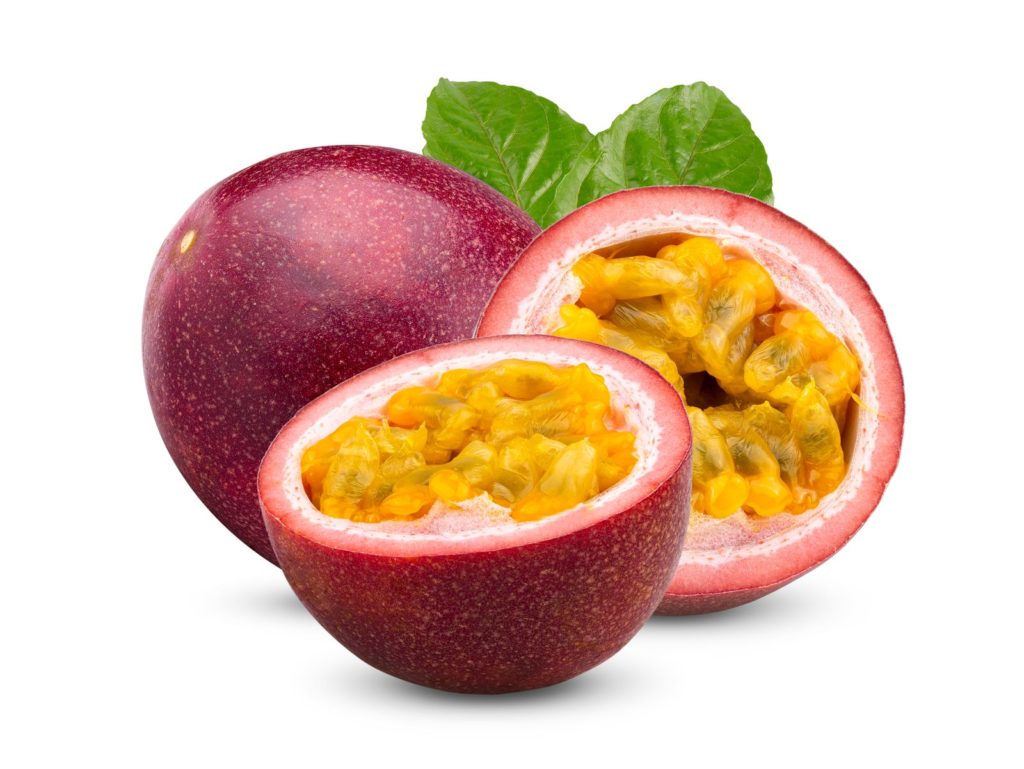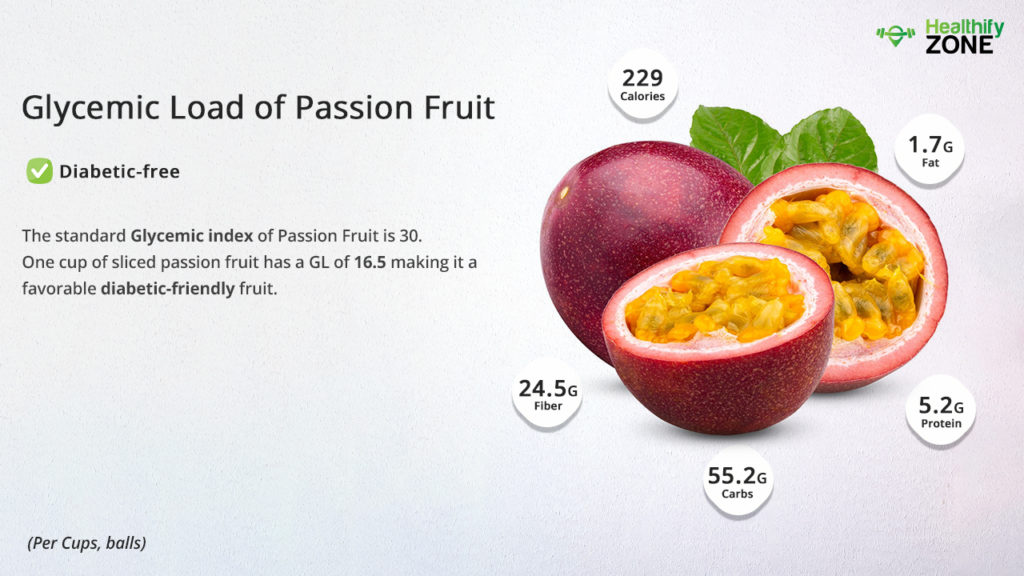Glycemic Load is the classification of food with carbs present in them based on how drastically it causes your blood sugar levels to rise. The food items are assigned a numeric score based on how they affect the blood sugar levels, which is reflected in the Glycemic Index. It is considered a better and easier way of finding healthier food items. Glucose causes a bigger increase in blood glucose levels in comparison to fructose.
Passion fruit is a tropical fruit that is becoming increasingly popular now among health-conscious people because it is packed with nutrients. It is very small in size but is rich in antioxidants, vitamins, and plant compounds, which would be very beneficial for your health. It has a tough rind but is filled with juicy seeds within and is absolutely delicious. According to the International GI Tables, it has a GI of 30.

Passion fruit comes in various colors, but purple and yellow is the most common, and it comprises healthy nutrients like
- Vitamin C
- Vitamin A
- Iron
- Potassium
How to Calculate Glycemic Load of Passion Fruit?
The standard Glycemic index of Passion Fruit is 30. The high glycemic index of the fruit helps in reducing the risks related to cardiovascular diseases. If we want to talk about diet, the key to prevent diabetes or any chronic illness is to distribute the carbohydrate consumption content throughout the day and manage the sugar levels in the body correctly—Passion fruit has a low glycemic load and thus you can have a passion fruit smoothie as a meal replacement.
The Formula/Procedure For Calculation of Glycemic Index of the Watermelon :
GL = GI * carbs / 100
where
- GL – glycemic load;
- GI – glycemic index;
- and carbs – the amount of carbohydrates in the portion.

| SL.NO | PASSION FRUIT BY WEIGHT IN (g) | GLYCEMIC LOAD |
| 1. | 100 g of Passion Fruit | 6.9 (low) |
| 2. | 250 g of Passion Fruit | 17.25 (medium) |
| 3. | 500 g of Passion Fruit | 34.5 (high) |
| 4. | 1 Kg of Passion Fruit | 69 (very high) |
| 5. | 1 Cup of Passion Fruit | 16.5 |
Is Passion Fruit Safe to Consume If You Have Diabetes?
Passion Fruit has a considerably low GI, which means that it does not cause an increase in your blood sugar levels, which is very important to maintain if you have diabetes. It does not cause any steep increase and is low in calories, and is packed with nutrients. Therefore, Passion fruit is suggested for people who have diabetes. Diabetic patients in the appropriate quantity should consume watermelon and foods containing healthy fats, fiber, and protein.
Can I Eat Passion Fruit During a Fat-Loss Diet?
You can eat passion fruit during a strict fat-loss diet. However, you must not overdo it and avoid anything more than 250 g in one serving.

- A 250g serving of passion fruit has a GL of 17.25 which is in the permissible levels.
- Anything more than 250 g of passion fruit is something which should be taken rarely if you are on a fat-loss diet.
- Passion fruit as a salad or smoothie ingredient is premissible in a fat-loss diet.
Can I Eat Passion Fruit During a Low-Carbohydrate Diet?
You can consume passion fruit during a strict low-carb diet. However, be mindful about the portion size that you consume. We suggest you not consume more than 100 g of passion fruit per serving.
Is Passion Fruit High in Sugar?
100 g of passion fruit has 11 g of sugar and 23 g of carbs. It has a considerably low amount of sugar but a decent amount of carbs. It can make for a great, nutritious, and tasty snack. It is low in calories, and high in nutrients, fiber and antioxidants, all of which make it an excellent fit for your low-carb and low-fat diets.